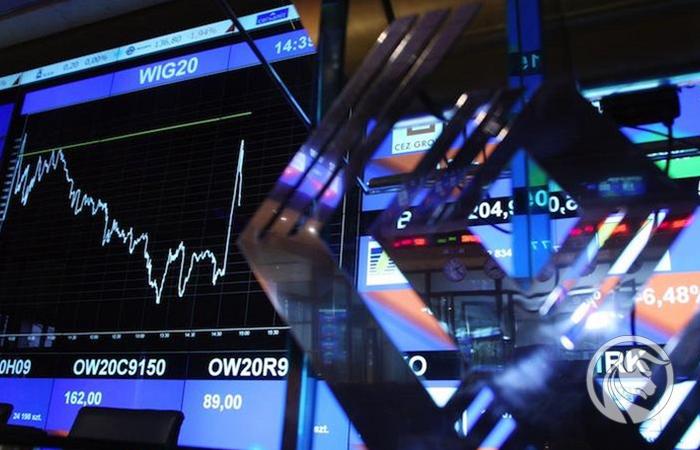Market barometer - a few words about indices
Very often, when thinking about investing money, especially in the stock markets, we will think that "Is this the right time?". We then have to delve into the analysis business cycle and the current market situation. After this assessment, we are able to assign it to the appropriate phase and consider whether it is the right moment to allocate capital there. In order to properly and, above all, reliably assess the moment in which the economy is located, it is necessary to know not only the basic market mechanisms, but also the aspects strictly related to economic knowledge. Even good analysts are often unable to assess the economic situation in which we currently find ourselves. In this matter, this matter is facilitated by the heroes of today's article, i.e. indexes.
What are indexes?
First of all, indices allow us to quickly assess the situation on the market. After a short analysis, we are able to generally determine how well or how bad the stock market is doing. The index, quite bookish and theoretically speaking, is a statistical measure that represents a certain set - in this case, a basket of companies. Thanks to this, we can treat the index as a barometer of the market situation, which consists of companies selected according to specific parameters. Their% share is appropriately "weighted". The indices therefore reflect the broadly understood economic situation of listed companies. You will learn how and what this weighing means in a later section.
Composition of the index
We already know that the index consists of specific companies. Now it's time to find out what they contribute to a given barometer. By understanding the parameters and mechanisms of selecting enterprises for specific barometers, we will be able to assess whether their change reflects the situation of only one industry, with the dominant company at the fore, or the broad market.
Price-weighted index
Tracks changes in the market based on the price of individual shares. This definition apparently tells us little. This is best illustrated by a simple example. Suppose our index consists of only two companies. The securities of the former cost PLN 4, and the latter PLN 6. This means that the first enterprise would have a 40% weight in the index and the second 60%. Therefore, changes in the stocks of both companies will proportionally affect the values of our barometer. What if the shares of the first company grew by 10% and the second one by 20%? To estimate this, we would have to take the original shares in the index, i.e. 40%, and multiply by the value of the increase - 10% and 60% x 20%. The first action gives us the result 0,04, the second 0,12. Total 0,16 x 100% = 16%. The index value would increase by 16%.
Balanced indexes
As the name suggests, each value that makes up the index receives equal weight at the beginning. This means that any change in the stocks of companies will be calculated as the arithmetic mean of the returns of all the securities included in it. It is worth noting, however, that if a given company grows, its share in terms of value in the index will also increase. This phenomenon is called rebalancing.
Market Value Weighted Index
This type of index will, unlike its predecessors, more actively follow decreases and increases in the market, in proportion to their market value. Capitalization (or market value, i.e. the value of all company shares) is the basis that creates the behavior of the barometer.
READ NECESSARY: Return on Assets - what is the ROA indicator
In addition to the classic methods of calculating, stock indices may differ in several other aspects. The ones presented above have been indicated for the broad market. Therefore, the industry is irrelevant (there is also a division into indices reflecting companies from a given sector, e.g. chemical, construction, fuel). On the other hand, a significant difference appears with the influence of income indicators (which is influenced by e.g. dividend) to change the index. I am talking about the price and income type.
It is a completely different division than presented earlier due to the way of weighing the ingredients. I have given the dividend above for a reason. When analyzing its impact on the price index, it will be significant due to the fact that it reflects changes in the rate that we have to pay for a given stock. It's known that the profit paid to investors in the form of dividends adjusts the share price by its value. Income indices, on the other hand, give a picture, as the name suggests, of the income that will be obtained by the shareholder who invests capital in the stocks that make up the index. Accordingly, its price will not change, based on the dividend payment.
WSE indices
The primary and oldest index on the Polish stock exchange is WIG. It includes all companies listed on the main market of the WSE that meet the basic criteria for participation in it. It belongs to the income type indices, which means that when calculating it, both the prices of the shares it contains and the income from dividends and subscription rights are taken into account. The base value was 1000 points.
There are several subcategories among WIG:
- Wig20 - is the most prestigious index of the Warsaw Stock Exchange. It includes, as the name suggests, the 20 most liquid and largest companies listed on the WSE. It is a price type index. The weights of individual companies are determined on the basis of market value and turnover.
- mWIG40 - is based on 40 medium-sized companies. It is calculated similarly to its predecessor. It is characterized primarily by greater volatility (and risk) and a potentially higher rate of return.
- sWIG80 - includes 80 small-cap companies. The index works well as a measure of the general economic situation among small companies. Moreover, it is exposed to the greatest fluctuations, but at the same time offers the highest rates of return.
Among the indices, we also distinguish the above-mentioned industry indices. As sectors and branches of the economy develop, new ones are added. They reflect the general situation in a given industry. The most popular are: WIG-Banks, WIG-Chemia, WIG-Paliwa or WIG-Informatyka.
It is also worth paying attention to two opposite indices, namely WIG20 lev and WIG20 short. The first one is useful for players who supplement their strategies with the use of derivatives or take out loans for their positions. It is based on WIG20 prices and its movements are doubled. The second, however, is the inverse of the first, i.e. leveraged, index. It is also based on the WIG20. If the WIG20 goes up by 10 points, the WIG20 short goes down by 10 points.






















![Forex Club – Tax 9 – Settle tax on a foreign broker [Download the Application] Forex Club - Tax 9](https://forexclub.pl/wp-content/uploads/2024/02/Forex-Club-Podatek-9-184x120.jpg?v=1709046278)
![Trading View platform – solutions tailored to the needs of traders [Review] trading view review](https://forexclub.pl/wp-content/uploads/2024/03/trading-view-recenzja-184x120.jpg?v=1709558918)
![How to connect your FP Markets account to the Trading View platform [Guide] fp markets trading view](https://forexclub.pl/wp-content/uploads/2024/02/fp-markets-trading-view-184x120.jpg?v=1708677291)
![How to invest in ChatGPT and AI? Stocks and ETFs [Guide] how to invest in chatgpt and artificial intelligence](https://forexclub.pl/wp-content/uploads/2023/02/jak-inwestowac-w-chatgpt-i-sztuczna-inteligencje-184x120.jpg?v=1676364263)


![WeWork – the anatomy of the collapse of a company valued at $47 billion [WeWork, part II] wework bankruptcy story](https://forexclub.pl/wp-content/uploads/2024/04/wework-bankructwo-historia-184x120.jpg?v=1711729561)
![Adam Neumann – the man who screwed up Softbank [WeWork, part AND] adam neumann wework](https://forexclub.pl/wp-content/uploads/2024/04/adam-neumann-wework-184x120.jpg?v=1711728724)





![How to transfer shares to another brokerage office [Procedure description] how to transfer shares to another brokerage house](https://forexclub.pl/wp-content/uploads/2024/03/jak-przeniesc-akcje-do-innego-biura-maklerskiego-184x120.jpg?v=1709556924)

![The most common mistakes of a beginner trader - Mr Yogi [VIDEO] Scalping - The most common mistakes of a beginner trader - VIDEO](https://forexclub.pl/wp-content/uploads/2024/03/Scalping-Najczestsze-bledy-poczatkujacego-tradera-VIDEO-184x120.jpg?v=1711601376)
![Learning patience: No position is also a position - Mr Yogi [VIDEO] Scalping - Learning patience - No position is also a position - VIDEO](https://forexclub.pl/wp-content/uploads/2024/03/Scalping-Nauka-cierpliwosci-Brak-pozycji-to-tez-pozycja-VIDEO-184x120.jpg?v=1710999249)
![When to exit a position and how to minimize losses - Mr Yogi [VIDEO] Scalping - When to exit a position and how to minimize losses - VIDEO](https://forexclub.pl/wp-content/uploads/2024/03/Scalping-Kiedy-wyjsc-z-pozycji-i-jak-minimalizowac-straty-VIDEO-184x120.jpg?v=1710336731)

















